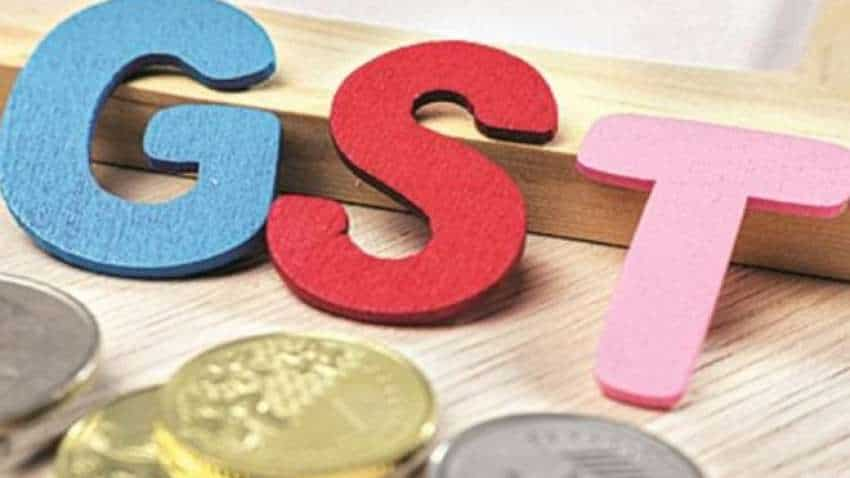One year of GST: Long way to go for a simple, uniform tax regime
According to NITI Aayog Vice Chairman Rajiv Kumar: "GST has put the economy on a completely different paradigm now because more and more pressure will be on people to register under GST and bring their economic activity into the formal sector."

Touted as the biggest economic reform since Independence, the Goods and Services Tax (GST) was supposed to replace the complex indirect tax system prevalent in the country with a more simplified, uniform regime. As its roll-out completes one year on June 30, it can be argued that while India has come a long way from a complicated taxation system, with over a dozen different taxes and many more cesses, GST is still far away from an ideal taxation regime.
Also, the one year journey of the GST has not been a smooth one either with glitches and teething problems experienced from day one. While many of those glitches were addressed by a proactive government, some still remain to be resolved including simplification of return filing and further rationalisation of tax rates.
According to NITI Aayog Vice Chairman Rajiv Kumar: "GST has put the economy on a completely different paradigm now because more and more pressure will be on people to register under GST and bring their economic activity into the formal sector."
It is not enough only to analyse the one year journey, but it is important to understand the future roadmap.
While many economist would argue that an ideal GST structure should have a universal coverage and a single tax rate, most would also agree that it was not practical for a country like India with vast economic disparities. This is a stand the government has also maintained often giving the example that "a BMW car and a Hawai `chappal` (flip-flops) can`t be taxed at the same rate".
However, having six different rates -- 5, 12, 18 and 28 per cent apart from some items being taxed at zero per cent and gold at 3 per cent -- makes India`s GST one of the most complex in the world, something acknowledged by the World Bank in its biannual India Development Update report.
"To make things worse, petroleum products, power and real estate have been kept outside the GST ambit," the report noted.
It added that not only India has one of the largest number of tax slabs, but at 28 per cent, it has the highest standard GST rate in Asia and the second highest in the world after Chile.
Soon after the new indirect tax system was rolled out, NITI Aayog Member Bibek Debroy -- who is now also the chairman of the Prime Minister`s Economic Advisory Council -- had told IANS that "India is a long way off from the ideal GST structure and it may not get there anytime in the near future".
Favouring a maximum of three GST rates with all items covered, Debroy had said that starting with seven rates, "depending on how you count it", has put India in a situation where it may not get to the ideal GST.
Fast forward to present. The economy is still grappling with the rather high multiplicity of tax rates while also debating bringing petroleum products, electricity and other items into the GST net with little clarity in the picture.
While there has been expression of intent by the government to merge some of the tax slabs, there has been little progress on that front so far.
Right from the first day of the roll-out on July 1 last year, there were technical glitches appearing on the GST Network portal causing a lot of hardship to taxpayers in registering on the network. There were often instances of the portal not being able to take the load of last-minute rush to file returns, forcing the government to postpone the filing deadlines several times.
The glitches also led to export refunds piling up, resulting in a grave situation of cash crunch for exporters, whose working capital was getting blocked.
However, to address this, the government initiated two special fortnight-long drives (extended by a few days later) to process pending refunds -- one in March and another in June -- clearing a major portion of the backlog while some still remains.
To address the GST network issues, the GST Council has set up a five-member ministerial panel headed by Bihar Deputy Chief Minister Sushil Modi to oversee its functioning and smoothen the process.
"GST is a very huge and complex exercise and one has to be honest that it could be implemented better and the details could have been (better) thought through," the NITI Aayog`s Kumar told IANS.
While there was consensus that no reform could be undertaken without some glitches and teething problems, which could be addressed as we go along, one major concern was that GST might lead to some loss of revenue, especially for the states.
This fear almost came true when GST collections fell for two consecutive months from over Rs 92,000 crore (later revised to Rs 95,132 crore) in September to Rs 83,346 crore (later revised to Rs 85,931 crore) in October, and Rs 80,808 crore (later revised to Rs 83,716 crore) in November.
This prompted the GST Council in its December meeting to prematurely roll out the e-way bill mechanism for inter-state movement of goods from February 1 to plug gaps and check tax evasion.
The e-way bill portal crashed on Day One prompting the government to extend the trial period and eventually postponing the roll-out to April 1.
According to the NITI Aayog Vice Chairman, in a country like India, which is proud of its IT sector, there is hardly any excuse for the IT systems not to work.
However, when the system was rolled out the second time on April 1, the technical issues were sorted out and infrastructure boosted enough for a smooth implementation. The revenue collections also picked up subsequently crossing the Rs 1 lakh crore mark in March (collected in April) -- which was, however, attributed to the financial year-end effect -- and then again showing credible buoyancy in April when it crossed the Rs 94,000 crore.
Kumar said now that the GST has stabilised, it would give a massive fillip to economic activity.
Finance Secretary Hasmukh Adhia said earlier this week that GST had now entered a "smooth phase" with good tax compliance. He added the priority of the government would now be simplification of tax return forms.
Deloitte India Partner Prashant Deshpande said while GST has resolved the issues of multiple taxable events and double taxation, there are some concerns which still need to be addressed.
"On the legislation side, GST can be improved by extending it to petroleum products, electricity, land and building which are currently taxed under old laws... The number of tiers in tax rate structure are required to be reduced to resolve classification issues," Deshpande told IANS.
Watch this Zee Business video
On the execution side, he added, prime concern is the GST compliance infrastructure "which is complex and cumbersome" which needs to be replaced with "a simple and robust compliance system".
It would a while before such a system comes into effect.
Get Latest Business News, Stock Market Updates and Videos; Check your tax outgo through Income Tax Calculator and save money through our Personal Finance coverage. Check Business Breaking News Live on Zee Business Twitter and Facebook. Subscribe on YouTube.
RECOMMENDED STORIES

SIP in Stocks For New Year 2025: Market guru Anil Singhvi recommends 1 largecap, 2 midcap scrips to buy in dips; note down targets

Power of Rs 15,000 SIP: How long it will take to achieve Rs 7 crore corpus? See calculations to know

SBI Latest FD Rates: PSU bank pays these returns to senior citizens and other depositors on 1-year, 3-year and 5-year fixed deposits
04:49 PM IST










 GST collections in December increase 7.1% to Rs 1.76 lakh crore
GST collections in December increase 7.1% to Rs 1.76 lakh crore Tax officials initiate inspection of M&M records in Chennai
Tax officials initiate inspection of M&M records in Chennai Popcorn sold in movie theatres to attract 5% GST
Popcorn sold in movie theatres to attract 5% GST GST on old used cars only when sale price higher than depreciated value
GST on old used cars only when sale price higher than depreciated value  States not in favour of bringing ATF under GST, says finance minister
States not in favour of bringing ATF under GST, says finance minister